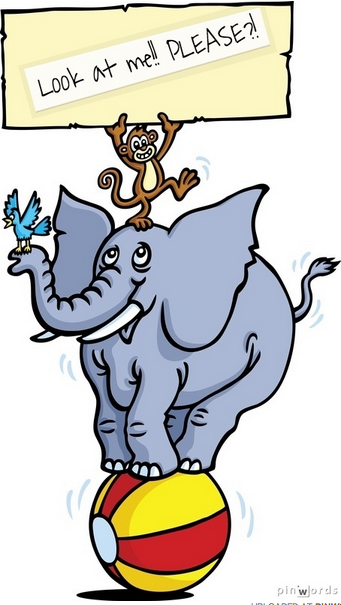
These days, marketers are on an aggressive quest for attention. Attention for their brand, their products, their expertise. To get it, they often ditch their long-term strategy for the new shiny toy, from social media trends and channels to alternative targeting tactics and SEO tricks.
Often, the more attention a marketing campaign gets, the more “successful” it’s deemed.
But is there any danger in equating attention with success? Is Burger King’s “Whopper Sacrifice” campaign (which rewarded Facebook users who unfriended 10 connections with a free whopper) really that remarkable? Was Oreo’s “you can still dunk in the dark” tweet during the Superbowl blackout in 2013 truly revolutionary?
I think not.
An extraordinary marketing campaign doesn’t just engage, it informs.
By building an extraordinary marketing campaign, you attract the right attention. It doesn’t just engage, it informs. It fills a need. It’s useful.
What to Consider When Building a Marketing Campaign
Want to learn how to cut through the noise and make your marketing campaign really mean something? Here are a few ways to do it.
1. Simplify
If your marketing campaign is sacrificing your organization’s brand values in an effort to get more likes and retweets, it’s time to take a step back.
In the end, views, likes, and shares mean nothing if people aren’t taking action that drives revenue.
Yes, building brand awareness is important. But you need the right kind of awareness. Potential buyers will tune you out if your message doesn’t resonate with them. Slow down, figure out what you want to communicate and why it matters to your buyers.
Beware of the following vanity metrics:
- Likes
- Shares
- Clicks
- Downloads
Sure, you want to know these numbers to see how your audience is reacting to certain content. But a download certainly doesn’t always come from a qualified lead, so don’t think of it as a demo request.
Identify what the core goal of your marketing campaign is to best align your content to it. Tie actionable metrics to it and don’t let anything else cloud your vision.
2. Listen
To identify the right message, you need to listen. Marketers love to talk about their “buyer-centric” strategy. But the reality is, a lot of these strategies are based on assumptions. Use social media listening tools like Hootsuite and Brandwatch, surveys, or focus groups to understand the priorities of the people you’re trying to reach.
Even better, do some work on your buyer personas. Creating B2B buyer personas that inform your marketing strategy allow you to speak directly to the appropriate pain points and situations of your target audience. Here’s exactly what your buyer personas should do:
- Describe the buyers’ perspectives on your product based on what they want to achieve
- Demonstrate their relationships to other members of the buying committee
- Identify obstacles impeding progress at each stage of the buying process
- Reveal information needed throughout the buying process
- Clarify their priorities and challenges
- Inform the tone, style, and voice for content
- Assist writers to create content that speaks directly to this persona
- Enable collaboration among marketing, product, sales, and customer service for a consistent experience
- Contribute to a consensus on what constitutes a qualified lead
- Align your business objectives to their business objectives
Keeping your buyer personas updated and documented keeps everyone on the same page, plus you’ll find it’s more intuitive and streamlined to build an effective marketing campaign.
3. Watch
What people say isn’t always what they do. So in addition to listening, you must track their activity. While a shipping company’s Christmas GIF might drive a ton of traffic, they’ll probably get more leads from a guide outlining how to properly pack and ship gifts. Either way, actions are what get people in your funnel. So make sure you’re tracking them and identifying patterns in how people interact with your content.
This ties back to actionable vs. vanity metrics. We talked about what vanity metrics are; here are some of the real metrics you should emphasize:
- Active Customers
- Upsell Revenue
- Conversion Rate
- New Customers
- Churn
- Retention Rate
If you’re still a growing company, this data may take a while to accumulate. Start tracking it now anyway.
4. Provide
Content is an experience. And it’s an experience that should provide value.
The best marketers understand that content isn’t just eBooks, web copy, and social media posts. Content is an experience. And it’s an experience that should provide value to its intended audience. Value might come in the form of a question answered or a problem solved. The content experience your marketing campaigns provide should make life just a little bit easier for its users and readers.
These days, 57% of the buyer process happens before the customer ever contacts a salesperson. That means your product has to speak for itself. How do you do that?
With content that delivers value that’s easily digestible and informative. When you’re building a marketing campaign, you have to consider the true purpose: moving potential buyers down the funnel. Providing value in that process assures them you will continue to provide value and deserve their loyalty. Ensure your marketing campaigns reflect that.
Key Takeaways
“Fun” and “engaging” content is great. But if that’s the backbone of your strategy, I’m afraid you’re not providing a very helpful content experience. There’s a difference between marketing campaigns and advertising campaigns: the latter seeks attention, the former seeks to serve.


